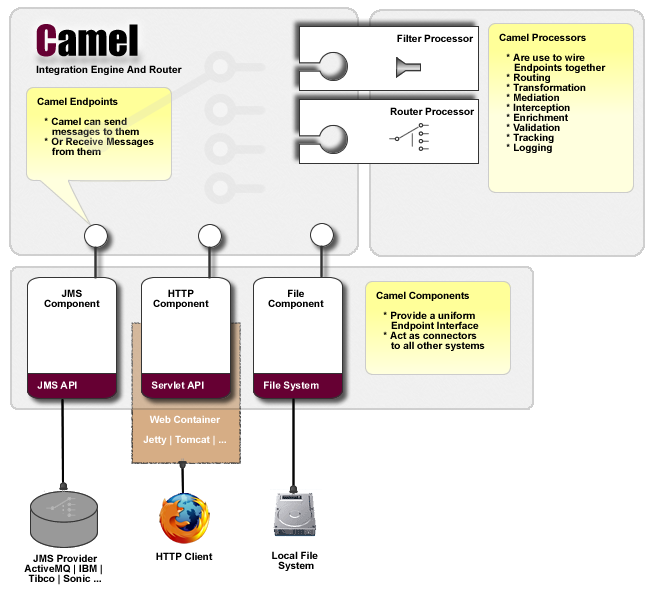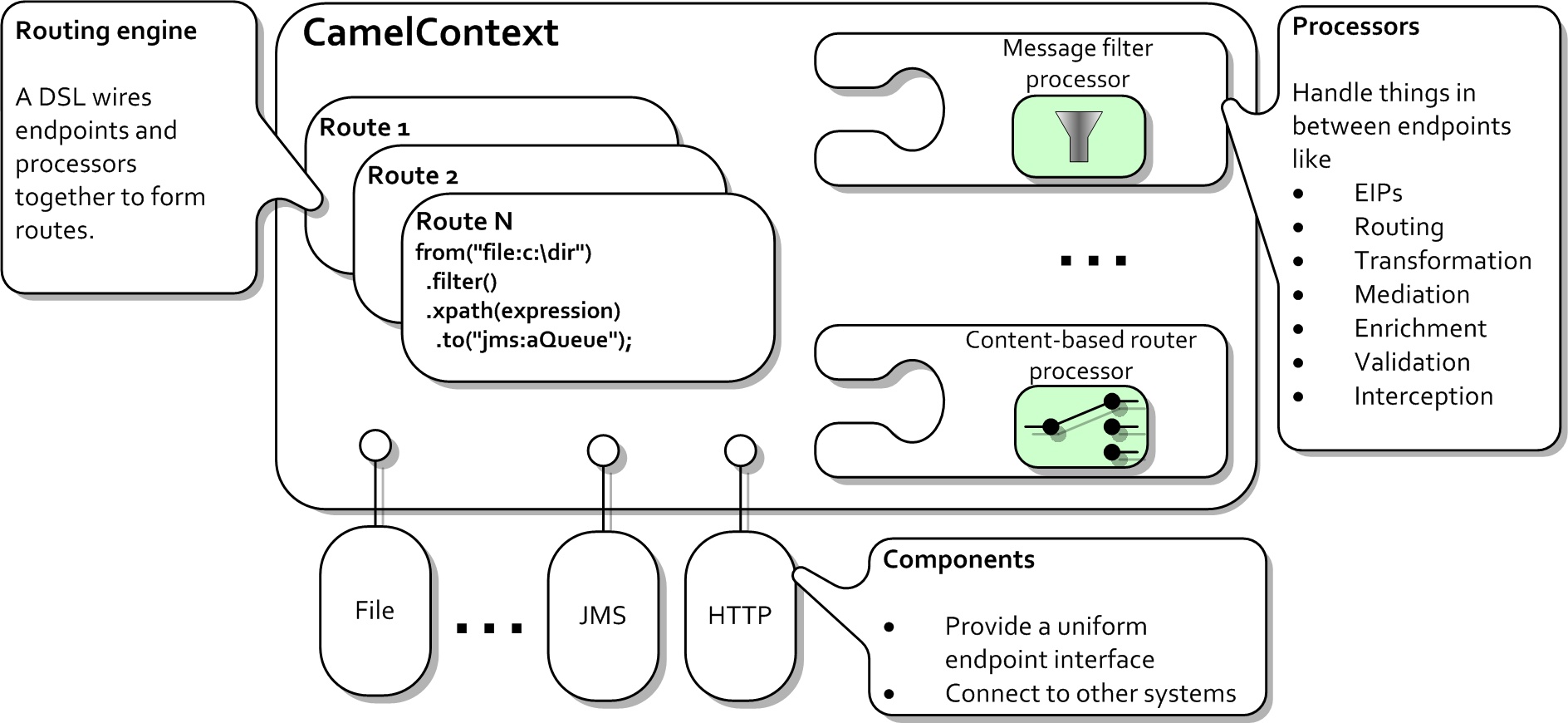Apache Camel的整体架构
Apache Camel是一个消息处理引擎,实现了EIP(Enterprise Integration Patterns,企业整合模式)。
Camel能够用来处理来自于不同源的事件和信息,定义规则进行消息的传递和转换等处理,以实现基于消息的应用整合。其整体架构如下图所示:

Message 和 Exchange
org.apache.camel.Message接口是对“消息”的抽象。消息由head、body、attachment等部分组成。

Camel中提供了一个默认的实现:org.apache.camel.impl.DefaultMessage,可以适应大部分的应用场景。
不管是请求、响应,或者异常,都可以作为消息在上下文(CamelContext)的消息处理器(Processor)之间进行交换(Exchange)。
org.apache.camel.Exchange接口就是对“消息交换”的抽象。

其中:
- Exchange ID : 区分每次消息交换的标识
- MEP: (message exchange pattern,消息交换模式),分为单向(InOnly)和请求-应答(InOut)两种
- Exception: 用于记录消息交换时发生的异常
- In message: 上一个节点传入的消息
- Out message: 当MEP 是InOut时,需要传出的消息
Camel提供了默认的org.apache.camel.impl.DefaultExchange实现。
Camel处理消息时,每个节点都在处理Exchange。
Endpoint 和 Component
Endpoint(端点),接收或发送消息的通道。通过URI连接消息源或目标。
为了适应各种不同的URI协议,如http,ftp,JMS,smtp等,Camel中提供了多种Endpoint,也支持扩展自己的Endpoint。

Component(不应该叫做组件,而应该是连接器connector)。org.apache.camel.Component接口只定义了两个方法:
createConfiguration(String)createEndpoint(String)
通常,客户代码不会直接调用createEndoint()方法,而是由CamelContext对象进行调用。
Camel中提供了大量的Component的实现:

Processor
不管是消息路由(Message Routing)、消息转换(Message Transformation)还是消息过滤(Message Filter),都是对消息的某种处理(Process)。
Camel中,抽象出org.apache.camel.Processor接口,表示对消息的处理。该接口只定义了一个方法:
1 | void process(Exchange exchange) throws Exception; |
从接口定义可以看出,Camel中认为可以处理消息交换(Exchange)的类都是消息处理器(Processor)。
基于Camle的应用可以开发自己的Processor实现,同时Camel提供了大量的内置Processor,以支持EIP(Enterprise Integration Patterns)。

CamelContext

CamelContext是对Camel运行时的抽象,提供了API用于管理Component、Endpoint、Processor等节点:

一般来说,使用Camel的步骤如下:
- 创建一个CamelContext对象。
- 向CamelContext对象中添加Endpoints或者是Components
- 向CamelContext对象中添加路由(routes)规则
- 调用CamelContext的start()方法启动Camel引擎
- 通过Endpoint发送或接收消息
- 调用CamelContext的stop()方法时
定义路由(Route)
每个消息处理流程是由一系列的Processor连接而成的图(Graph),每个图称为一个路由(Route)。
在开始使用Camel之前,需要在CamelContext中定义一个或多个路由。Camel支持使用DSL或者Spring XML进行配置。比如:
1 | RouteBuilder builder = new RouteBuilder() { |
或者:
1 | <beans xmlns="http://www.springframework.org/schema/beans" |
FUSE Mediation Router: 企业级Camel
FuseSource提供Camel的经测试、认证并提供支持的企业级版本,称作FUSE Mediation Router。